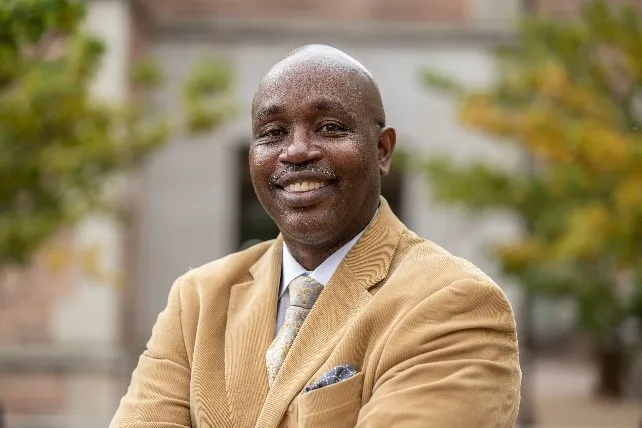Suicide rates among Black Americans are increasing by double digits
Share
Explore Our Galleries
Breaking News!
Today's news and culture by Black and other reporters in the Black and mainstream media.
Ways to Support ABHM?
By Dwayne Bray, Andscape
A conversation with Sean Joe, one of the leading experts on suicide in the Black community

For decades, the rate of suicide among Black Americans was a fraction of what it was for white people. But in recent years, suicide is becoming more common in the Black community. For Black children 12 and under, the suicide rate is now higher than it is for white kids.
The incidence of suicide among Black folks rose 19.2% over three years, from an age-adjusted rate of 7.3 suicides per 100,000 people in 2018 to 8.7 in 2021, the federal Centers for Disease Control and Prevention reported earlier this year. The health policy research organization, the Kaiser Family Foundation, reported that suicide in the Black community jumped 58% from 2011 to 2021.
The total number of suicides in the Black community in 2021 — 3,692 — was still dwarfed by the number of white people taking their own lives (36,681). But among Black children and young adults ages 10 to 24, suicides grew an astonishing 36.6% from 2018 to 2021, the CDC said. For Black people ages 25 to 44, the increase was 22.9%. Comparable rates for white people either declined or were flat over the same timeframe, except for people over 65, where there was a 1% increase. (The highest rate of suicide reported by the CDC was among American Indian or Alaska Natives, although their overall number was relatively small.)
[…]
Researchers say there is no single reason people take their own lives. Relationship and financial problems and substance abuse can contribute to suicidal behavior and ideation. They attribute the increase in suicides among Black people to a variety of factors, including underdiagnosis of mental health conditions, lack of access to mental health services, structural barriers to that care, the availability of firearms, and racism and discrimination.
They say they’re encouraged that entertainers and athletes – including tennis player Naomi Osaka, gymnast Simone Biles and Chicago Bulls forward DeMar DeRozan – are helping to destigmatize mental health concerns by talking openly about their personal struggles.“What that signals is that it’s OK for others to also express themselves and to reach out for help,” said Sean Joe, a professor at Washington University in St. Louis. “It normalizes the importance of getting space to be able to talk through your challenges, talk through your pain, talk through your stress.”
To get further context on the problem, Andscape spoke with Joe, one of the nation’s authorities on suicide in the Black community.
Our exhibits about contemporary society can explain why some may die by suicide.









Comments Are Welcome
Note: We moderate submissions in order to create a space for meaningful dialogue, a space where museum visitors – adults and youth –– can exchange informed, thoughtful, and relevant comments that add value to our exhibits.
Racial slurs, personal attacks, obscenity, profanity, and SHOUTING do not meet the above standard. Such comments are posted in the exhibit Hateful Speech. Commercial promotions, impersonations, and incoherent comments likewise fail to meet our goals, so will not be posted. Submissions longer than 120 words will be shortened.
See our full Comments Policy here.